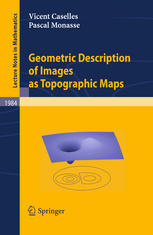

Most ebook files are in PDF format, so you can easily read them using various software such as Foxit Reader or directly on the Google Chrome browser.
Some ebook files are released by publishers in other formats such as .awz, .mobi, .epub, .fb2, etc. You may need to install specific software to read these formats on mobile/PC, such as Calibre.
Please read the tutorial at this link: https://ebookbell.com/faq
We offer FREE conversion to the popular formats you request; however, this may take some time. Therefore, right after payment, please email us, and we will try to provide the service as quickly as possible.
For some exceptional file formats or broken links (if any), please refrain from opening any disputes. Instead, email us first, and we will try to assist within a maximum of 6 hours.
EbookBell Team

5.0
80 reviewsThis volume discusses the basic geometric contents of an image and presents a tree data structure to handle those contents efficiently. The nodes of the tree are derived from connected components of level sets of the intensity, while the edges represent inclusion information. Grain filters, morphological operators simplifying these geometric contents, are analyzed and several applications to image comparison and registration, and to edge and corner detection, are presented.
The mathematically inclined reader may be most interested in Chapters 2 to 6, which generalize the topological Morse description to continuous or semicontinuous functions, while mathematical morphologists may more closely consider grain filters in Chapter 3. Computer scientists will find algorithmic considerations in Chapters 6 and 7, the full justification of which may be found in Chapters 2 and 4 respectively. Lastly, all readers can learn more about the motivation for this work in the image processing applications presented in Chapter 8.